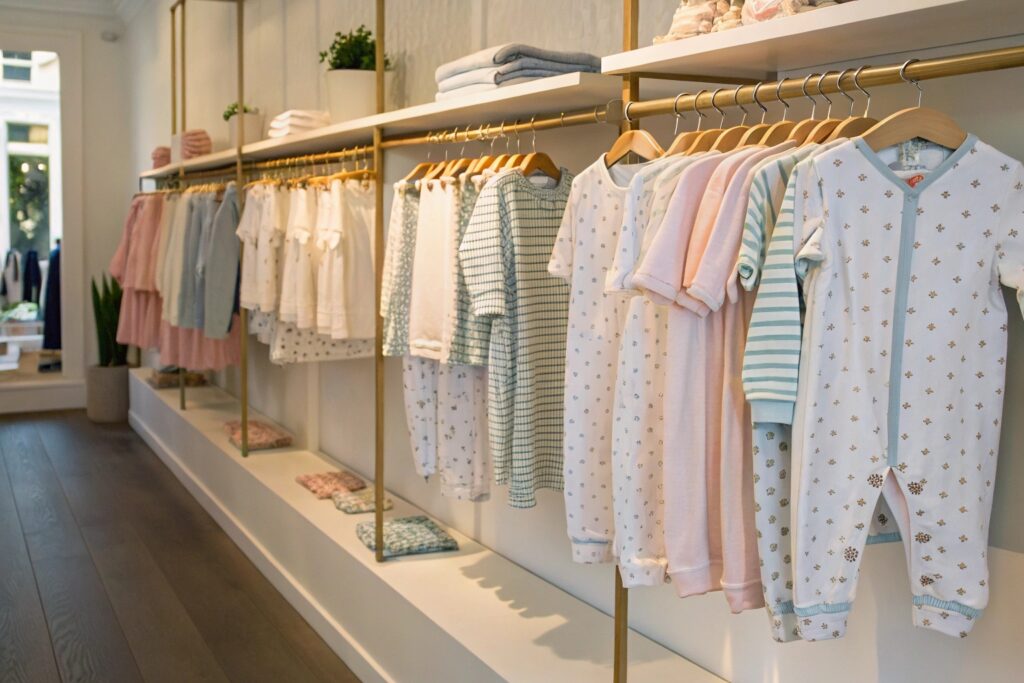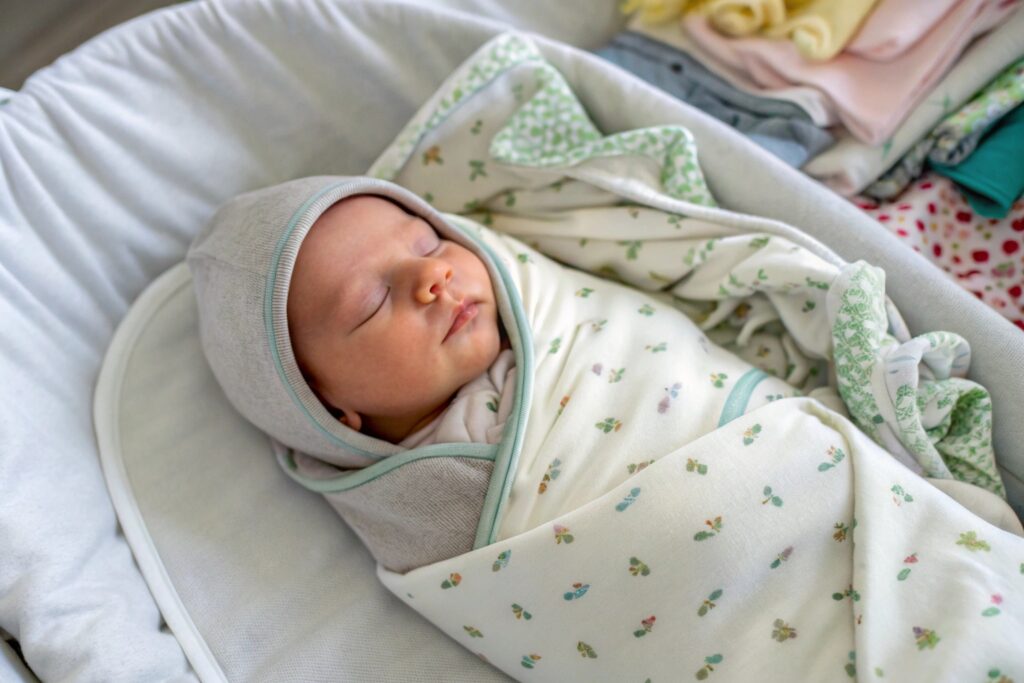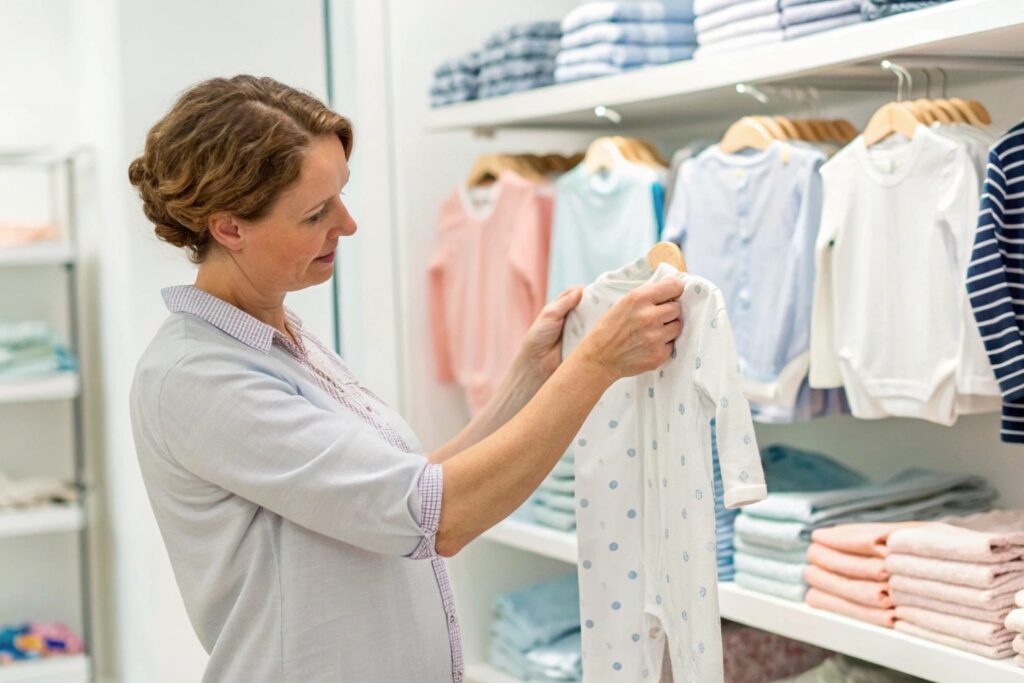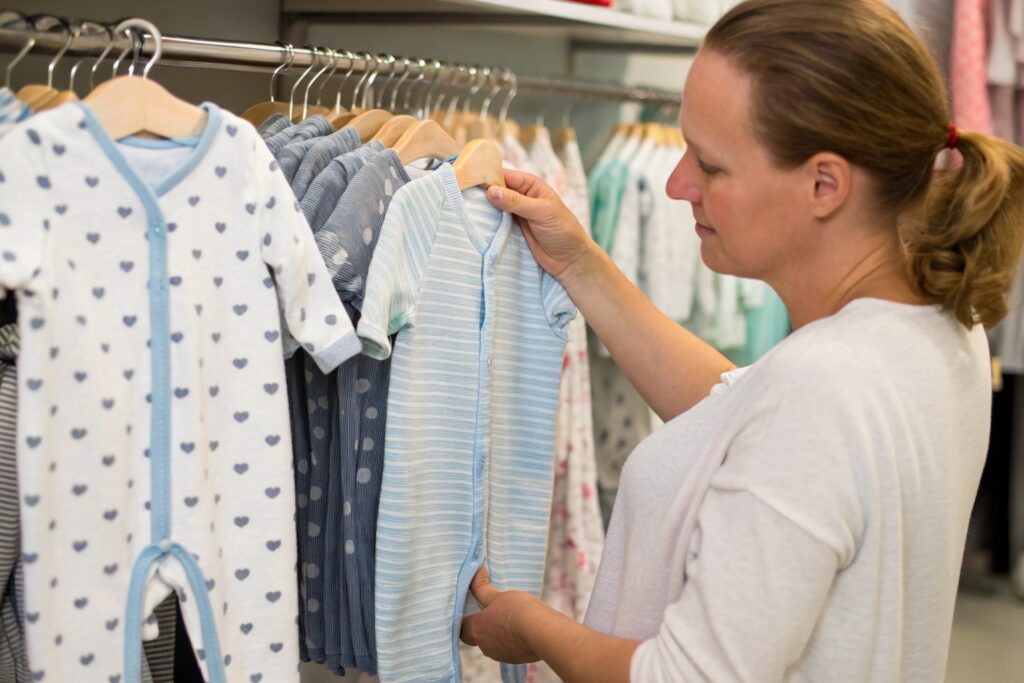When it comes to baby clothing, softness isn’t the only thing parents care about. Safety, sustainability, and skin-friendliness are now top priorities—especially in a world where textile chemicals and synthetic dyes are everywhere.
Certifications like OEKO-TEX® and GOTS are more than marketing badges—they’re trusted standards that verify babywear is non-toxic, ethically produced, and safe for sensitive skin.
Let’s explore what these labels mean and why they matter in the babywear industry.
What OEKO-TEX and GOTS Actually Certify in Baby Clothing?
Not all “organic” or “natural” labels mean the same thing. OEKO-TEX® and GOTS provide third-party verification that baby clothes meet strict safety and sustainability criteria.
OEKO-TEX® Standard 100 focuses on chemical safety in finished textiles, while GOTS certifies the entire organic textile supply chain from farm to factory.

Quick breakdown of each certification:
| Certification | What It Covers |
|---|---|
| OEKO-TEX® | Tests finished fabric for over 100 harmful substances |
| GOTS (Global Organic Textile Standard) | Certifies organic farming + ethical, eco-friendly processing |
OEKO-TEX® Standard 100:
- Ensures garments are free from harmful substances like formaldehyde, heavy metals, and allergenic dyes
- Tests for pH balance and colorfastness
- Applies to every part of the garment (thread, snaps, labels, prints)
GOTS:
- Requires at least 70–95% organic fiber content
- Prohibits toxic bleaches, dyes, and finishes
- Enforces fair labor and wastewater treatment at production sites
Together, these certifications guarantee what goes on your baby’s skin is clean, traceable, and responsibly made.
How These Labels Ensure Fabric Safety for Sensitive Skin?
Baby skin is thinner, more absorbent, and more reactive than adult skin. That’s why toxic residues from clothing are more likely to trigger rashes, eczema, or respiratory irritation.
OEKO-TEX® and GOTS certifications protect sensitive skin by preventing exposure to known allergens, carcinogens, and endocrine-disrupting chemicals.

Common risks in uncertified babywear:
- Formaldehyde – used in wrinkle-resistant finishes
- AZO dyes – may release carcinogenic amines
- Heavy metals – found in some pigments and fasteners
- Phthalates – used in synthetic prints or coatings
- Residual pesticides – from non-organic cotton farming
| Skin Sensitivity Issue | How Certifications Help |
|---|---|
| Rashes / eczema | No harsh chemicals, pH-balanced textiles |
| Allergies | No toxic dyes or residues |
| Inhalation risk | No volatile chemicals or fiber dust |
For newborns and infants who spend most of their time in bodysuits and sleepers, certified fabrics = peace of mind.
Why Certified Babywear Builds Trust with Modern Parents?
Today’s parents are informed, value-driven, and vocal. They want brands that align with their health, environmental, and ethical values—and they’re willing to pay more for proof.
Certifications like OEKO-TEX® and GOTS offer transparency and credibility, helping brands earn trust and loyalty in a competitive babywear market.

What parents look for when shopping:
- “Is this safe for my baby’s skin?”
- “Is this brand honest about their sourcing?”
- “Does this product support a better world?”
| Trust Factor | Certification’s Role |
|---|---|
| Non-toxic and safe | OEKO-TEX® logo confirms lab-tested safety |
| Truly organic | GOTS ensures fiber origin and processing |
| Ethical production | GOTS also covers worker rights |
| Sustainable values | Both standards restrict environmental harm |
Products that are both certified and clearly labeled tend to sell better—especially in premium or gift segments.
How to Identify Legitimate Organic and Non-Toxic Babywear?
Not all “organic” or “eco” labels are created equal. Some brands use greenwashing to sound clean without actual certification.
To make sure you’re buying real certified babywear, look for official logos, certification numbers, and traceable factory info on the tag or product page.

How to verify certification:
- Look for the OEKO-TEX® Standard 100 logo with a label number
- Check for the GOTS logo + license number (usually from a certifier like Control Union)
- Visit oeko-tex.com or global-standard.org to validate the certification
- Ask brands for supply chain transparency if logos are missing
- Avoid vague claims like “eco-friendly” or “green cotton” without proof
| Greenwashing Term | What to Watch For |
|---|---|
| “Natural” or “pure” | No legal definition or enforcement |
| “Organic cotton blend” | Can contain only 5% organic fiber |
| “Tested for safety” | Not the same as certified testing |
Only independent third-party certifications can guarantee safety and authenticity.
Conclusion
In babywear, certifications like OEKO-TEX® and GOTS are more than nice-to-haves—they're essential. They ensure fabric safety, environmental responsibility, and ethical practices across the supply chain. For parents seeking peace of mind and brands aiming to build long-term trust, certified babywear is the new standard.










